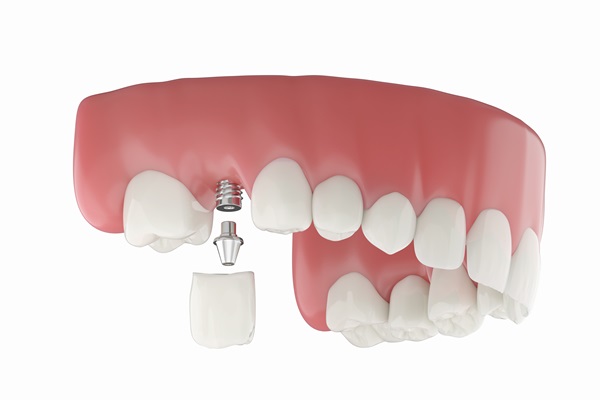Bone Grafting FAQs

When considering dental implants, your dentist may bring up the possibility of bone grafting if they believe that your jaw bone is too thin or soft to support the implant as is, which may cause the implant to fail down the line. Bone grafting is a basic surgical procedure done in the dental office to augment the bone.
Frequently asked questions
Below are some frequently asked questions about bone grafting.
How does bone grafting work?
Performed under local anesthesia, the grafting material is placed into the space left by a missing tooth. Afterward, the body will form new bone cells to replace the graft material gradually over several months.
Why may the procedure be necessary before dental implant placement?
Typically, dental implants should survive a lifetime, but this can only happen if the implant fuses firmly to the jawbone. If there is inadequate bone mass, the success rate of the implant procedure diminishes significantly. Low bone mass happens because the quality and quantity of the bone usually degrade when a tooth becomes missing, although the occurrence is hardly noticeable.
In some situations, when the person is ready to get the dental implants, the remaining bone may not be enough to support the implant. This is the reason bone grafting is necessary. The best choice is to replace a lost tooth as fast as possible and why dentists recommend bone grafting after tooth removal.
What is the source of the grafting material?
The dental expert may obtain the graft material from different sources, including your body. Recently, though, the grafts use synthetic materials and lab-processed bone from a human or animal donor (often a cow).
How safe is bone grafting?
There are no safety threats regarding the grafting material sourced from another part of your bone. However, the drawback of the method is that it requires creating another surgical site: the location where the bone is taken. Mineral bone replacements taken from animal bone or human donor have a minimal threat of infections because they are adequately screened.
The risk level for the two is similar because of the comprehensive and meticulous processing done at the trusted tissue bank. The result is a graft material that is totally safe. The mineral graft materials do not exist independently in the body but naturally dissolve and dissipate into the bone with time.
Is the procedure painful?
The dentist has to create a small incision in the gum to reach the bone under it. This means that you may suffer minimal soreness after the operation. The easiest way to reduce the pain is to apply ice packs on the jaw and use over-the-counter anti-inflammatory drugs and possibly pain relievers.
How long does healing take?
You should be good to go with a day or two. However, the bone regeneration process is only just starting at this point. Within the next few months, your body will keep depositing new bone cells and eliminate the grafting material.
Can the body reject the graft?
This does not happen because the material contains only minerals and no living or genetically coded element. The primary concern is the amount of bone that the body will form as a result of the graft. If the required bone mass is not attained when the graft has fully healed, additional grafting material may be added when placing the implants.
Call us today
If you have more questions about bone grafting, call us today so we can provide you with the information you need.
Request an appointment here: https://www.drjstearns.com or call Platte Valley Oral Surgery at (303) 997-0220 for an appointment in our Denver office.
Check out what others are saying about our services on Yelp: Read our Yelp reviews.
Recent Posts
Wisdom teeth extraction may be necessary to achieve better dental health. Research shows that the third molars often emerge after all your teeth have erupted. Wisdom teeth may not be a problem at all. But in some cases, the dentist will recommend their removal. Here are the details on how a wisdom teeth extraction happens.This…
Single-tooth implants use dental implant technology to provide long-term and natural-looking solutions to tooth loss. Since losing only one tooth can impact oral health, function, and appearance, replacing the tooth must be a priority. Here is a closer look at the importance of individual tooth replacement and some compelling reasons to consider single-tooth implants.Having a…
Infections after dental procedures occur frequently and that is primarily due to a lack of education on how to avoid it, however, with the help of an oral surgeon, infections can be avoided in a few ways. Oral surgeons are dental professionals who focus on invasive procedures that are necessary in order to treat or…
Clinical studies show that the dental implant remains the gold standard of dental restorations. Implants can help bring back your smile and dental function. The right dental professional can perform the procedure without any issues. Here are the details on how an oral surgeon approaches a dental implant surgery.Choosing a dentist who has training and…


